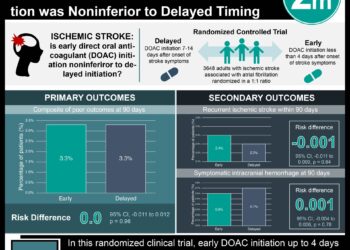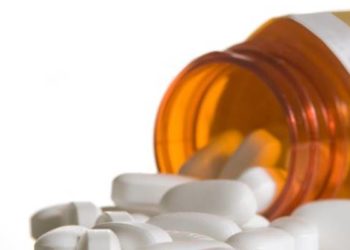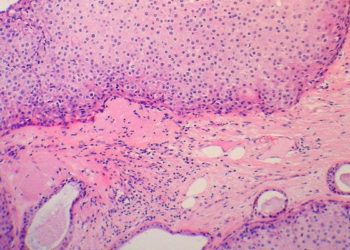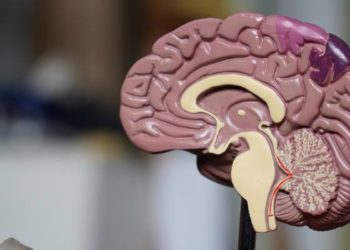Lower LDL cholesterol level after ischemic stroke decreases risk of subsequent stroke
1. This randomized controlled trial showed that patients with ischemic stroke or transient ischemic attack with target LDL levels of less than 70 mg/dL had lower rates of subsequent cardiovascular events when compared to target LDL levels of 90 to 110 mg/dL.
2. Patients were provided with a statin and ezetimibe for cholesterol control, as well as counseling on blood pressure, diabetic control, and smoking cessation.
Evidence Rating Level: 1 (Excellent)
Study Rundown: High cholesterol levels are a known risk factor for having a transient ischemic attack (TIA) and ischemic stroke. After having a TIA or stroke, intense statin therapy is recommended to decrease cholesterol levels by the American Heart Association and American Stroke Association, but they do not specify a target low-density lipoprotein (LDL) level. This randomized controlled trial evaluated the effects of target LDL cholesterol levels on recurrent major cardiovascular events in patients with a recent ischemic stroke or TIA. One group was assigned a target LDL of less than 70 mg/dL and the other group was assigned a target of 90 to 110 mg/dL. Participants were followed for an average of 3.5 years and provided with counseling on blood pressure control, diabetes control, and smoking cessation. The lower-target LDL group had lower rates of subsequent cardiovascular events occur when compared to the higher-target LDL group. This effect was driven mainly by a decrease in rate of subsequent cerebral infarction. Due to the trial ending early and inclusion of only two countries, further research is needed to determine longer-term risks and benefits of LDL targets as well as alternative LDL targets.
Click to read the study in NEJM
Relevant Reading: The Benefits and Risks of Statin Therapy in Ischemic Stroke: A Review of the Literature
In-Depth [randomized controlled trial]: This randomized controlled trial conducted between March 2010 and May 2019 included 2873 participants from 61 sites in France and 16 sites in South Korea. Participants with known atherosclerotic disease were eligible for enrollment if they had an ischemic stroke within the past 3 months confirmed by CT or MRI, or if they had a TIA within the past 15 days with symptoms that lasted for more than 10 minutes. Statins and ezetimibe were used to reach the assigned LDL targets and participants were followed every 6 months to adjust treatment as needed. In addition, investigators provided blood pressure control, maintained glycated hemoglobin less than 7%, and encouraged smoking cessation. At baseline, the mean LDL level was 135 mg/dL in each group. 33.8% of participants in the lower-target group received a statin plus ezetimibe to achieve target LDL level (versus 5.8% in the higher-target group), while the rest of the participants received only a statin. At follow up, the mean LDL was 65 mg/dL in the lower-target group and 96 mg/dL in the higher-target group. There was an 8.5% rate of major cardiovascular events in the lower-target group versus 10.9% in the higher-target group, including mainly cerebral infarctions (adjusted hazard ratio, 0.78; 95% CI, 0.61 to 0.98; P=0.04). The difference in the rates of intracranial hemorrhage and new onset diabetes between groups was not significantly different. No significant difference was found in the rates of myocardial infarctions or urgent coronary revascularizations.
Image: PD
©2019 2 Minute Medicine, Inc. All rights reserved. No works may be reproduced without expressed written consent from 2 Minute Medicine, Inc. Inquire about licensing here. No article should be construed as medical advice and is not intended as such by the authors or by 2 Minute Medicine, Inc.







